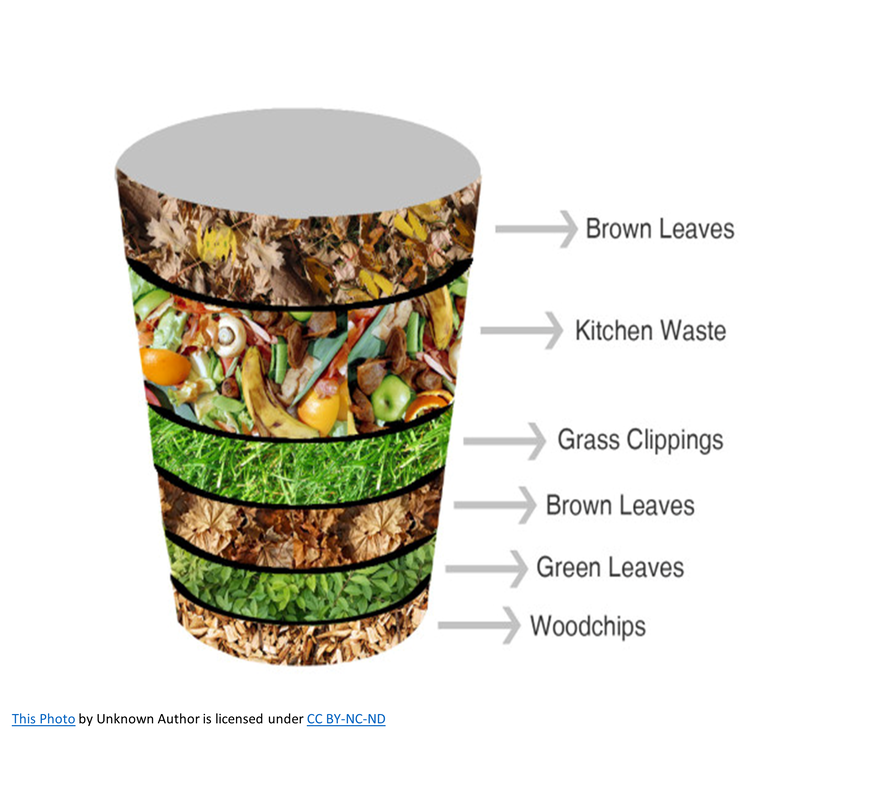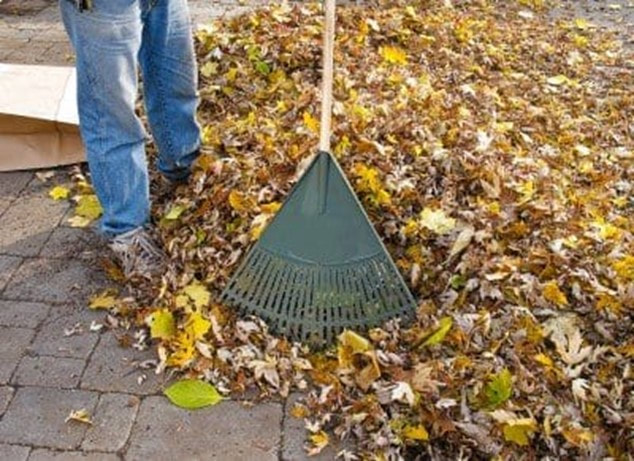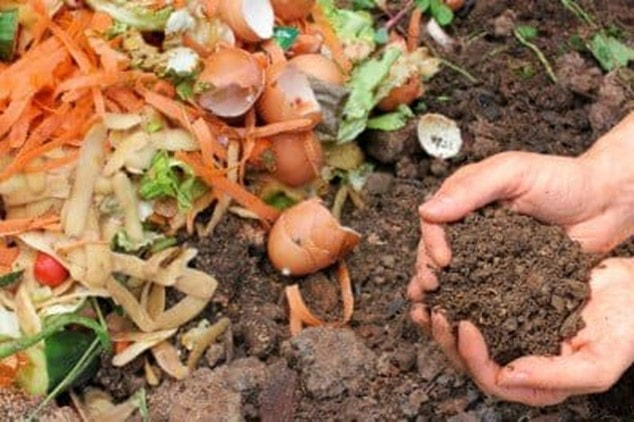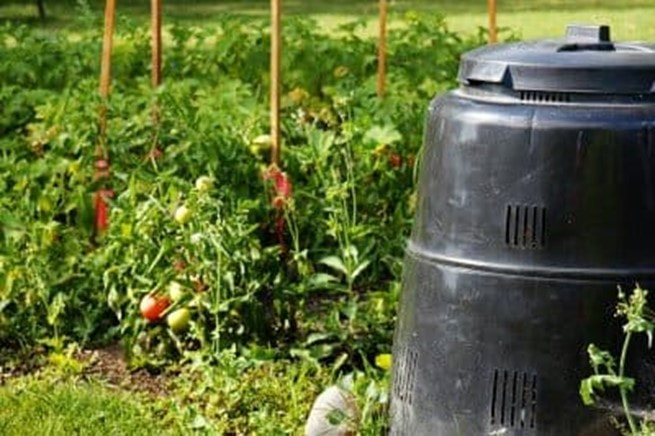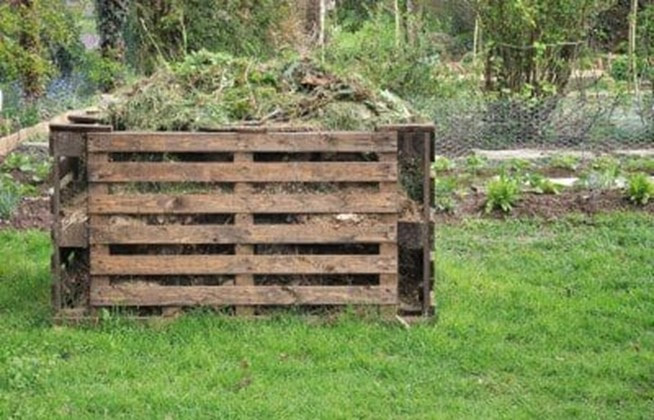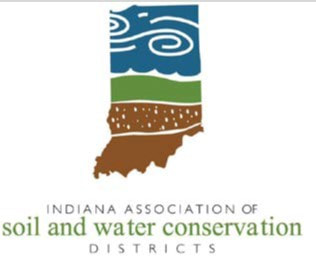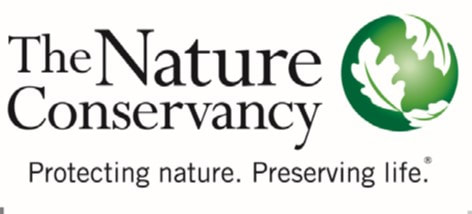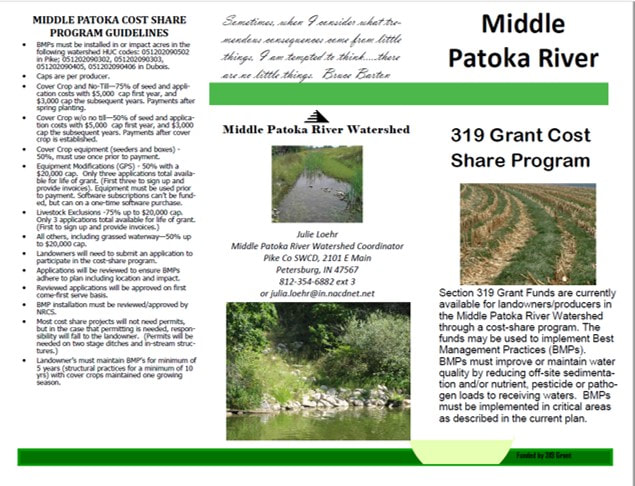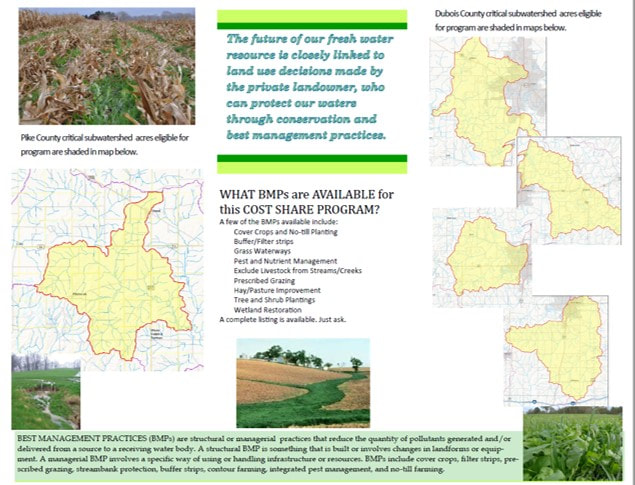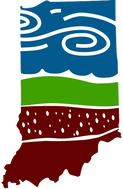Click here to download the following report as a PDF.
|
The Dubois County Soil & Water Conservation District partnered with The Pike County Soil & Water Conservation District on a second round of implementation of the Middle Patoka River Watershed 319 Grant. Pike took the lead on implementation with the first round occurring January 2013 through December 2015 in connection with the Alliance of Indiana Rural Water. The second round began in August of 2017.
The goals of the WMP were 1)Involve public in promotion of efforts to improve water quality 2)reduce nitrogen loads by 38% or 455,188 lbs./year 3)reduce phosphorus loads by 35 % or 55,074 lbs./year 4)reduce sediment loads by 39% or 10,420 tons/year 5)reduce E. coli levels to 235 cfu/100 ml 6)reach water quality standards in ten years. The goals of the 319 grant were to implement BMPs resulting in: * 40% of WMP’s load reduction goal in sediment (4,168 ton/year) * 30% of WMP’s load reduction goal in nitrogen (136,556 lbs./year * 10% of WMP’s load reduction in phosphorus (5,507 lbs./year) * improve water quality awareness and stakeholder education. |
Three objectives were identified to help reach the goals.
Objective 1: Review and revise the current cost-share program. The cost-share program will be the driving force to implement conservation practices as well as a means of technical and financial assistance to stakeholders in the critical area. The BMPs implemented will target water quality. Load reduction calculations will be calculated with Region 5 Load Estimation Model or STEPL or another approved model.
Objective 2: Additional BMP implementation in designated critical areas. Continue to foster mutually beneficial partnerships to ensure that implementation efforts target the highest priority problems within the watershed using the most effective BMPs. Target those loads that are contributing to nutrient and sediment loads that have contributed to the impaired watershed. Encourage first round implementation participants to continue in their conservation measures as well as seek out previously unaddressed areas where BMPs will be most effective and solicit additional stakeholders in those critical areas to utilize this round of funding for BMP implementation.
Objective 3: Continue outreach and education designed to promote long-term behavioral changes. Events directed toward behavioral changes in stakeholders, both landowners and homeowners can greatly impact water quality issues. Present alternatives to current practices in a way that encourages the changes in behaviors that result in water quality improvement in the watershed. Guide stakeholders in their understanding of their impact on the watershed by addressing the causes and effects of their actions on water quality.
Objective 1: Review and revise the current cost-share program. The cost-share program will be the driving force to implement conservation practices as well as a means of technical and financial assistance to stakeholders in the critical area. The BMPs implemented will target water quality. Load reduction calculations will be calculated with Region 5 Load Estimation Model or STEPL or another approved model.
Objective 2: Additional BMP implementation in designated critical areas. Continue to foster mutually beneficial partnerships to ensure that implementation efforts target the highest priority problems within the watershed using the most effective BMPs. Target those loads that are contributing to nutrient and sediment loads that have contributed to the impaired watershed. Encourage first round implementation participants to continue in their conservation measures as well as seek out previously unaddressed areas where BMPs will be most effective and solicit additional stakeholders in those critical areas to utilize this round of funding for BMP implementation.
Objective 3: Continue outreach and education designed to promote long-term behavioral changes. Events directed toward behavioral changes in stakeholders, both landowners and homeowners can greatly impact water quality issues. Present alternatives to current practices in a way that encourages the changes in behaviors that result in water quality improvement in the watershed. Guide stakeholders in their understanding of their impact on the watershed by addressing the causes and effects of their actions on water quality.
Taking into consideration the WMP goals and the grant objectives, the following Tasks were established.
Task A: Develop and promote a cost-share program to implement best management practices (BMPs) such as cover crops, conservation tillage, pasture improvement, livestock exclusion and others that address the water quality concerns outlined in the Middle Patoka River WMP. Details of the cost-share program shall be submitted to the State for approval prior to program implementation. Once the cost-share program is approved, provide technical assistance to landowners to facilitate BMP implementation through the coordinator's activities such as conducting farm visits; assist with conservation planning and BMP selection; and inspect installed BMPs to ensure that they meet design specifications.
Task A: Develop and promote a cost-share program to implement best management practices (BMPs) such as cover crops, conservation tillage, pasture improvement, livestock exclusion and others that address the water quality concerns outlined in the Middle Patoka River WMP. Details of the cost-share program shall be submitted to the State for approval prior to program implementation. Once the cost-share program is approved, provide technical assistance to landowners to facilitate BMP implementation through the coordinator's activities such as conducting farm visits; assist with conservation planning and BMP selection; and inspect installed BMPs to ensure that they meet design specifications.
Task B: Implement the approved cost-share program described in Task A. BMPs shall conform to the Natural Resource Conservation Service Field Office Technical Guide (NRCS FOTG) or other applicable specifications. BMPs shall be implemented only in critical areas as described in the MPR WMP. Up to 75% of the cost of the BMPs will be provided by the federal Section 319 funds (except a Comprehensive Nutrient Management Plan CNMP, where 90% of the cost will be provided) and at least 25% must be provided by the landowner or other non-federal source as match. Design costs may be included in the total cost of the BMP and will be reimbursed after the BMP is implemented.
All BMPs must meet the terms and conditions of the 319 Cost-Share Form, including documentation of actual costs for all BMPs. Urban BMPs must be approved by the IDEM Project Manager before grant funds are allocated to the BMP project.
Region 5 Load Estimation Model (or other approved model) shall be utilized, when applicable, to provide sediment and nutrient load reductions for every BMP implemented as a result of this project, including BMPs not funded with this grant.
All BMPs installed shall be geolocated. Section 319 funds may not be used to comply with any National Pollutant Discharge Elimination System (NPDES) permit or State rule. All animal feeding operations (AFO) that receive financial assistance pursuant to this grant must have a CNMP in place. Any AFO that is subject to NPDES permit requirements or is designated to be a concentrated AFO (CAFO) under 40 CFR Section 122.23 is ineligible for Section 319 funding.
All BMPs must meet the terms and conditions of the 319 Cost-Share Form, including documentation of actual costs for all BMPs. Urban BMPs must be approved by the IDEM Project Manager before grant funds are allocated to the BMP project.
Region 5 Load Estimation Model (or other approved model) shall be utilized, when applicable, to provide sediment and nutrient load reductions for every BMP implemented as a result of this project, including BMPs not funded with this grant.
All BMPs installed shall be geolocated. Section 319 funds may not be used to comply with any National Pollutant Discharge Elimination System (NPDES) permit or State rule. All animal feeding operations (AFO) that receive financial assistance pursuant to this grant must have a CNMP in place. Any AFO that is subject to NPDES permit requirements or is designated to be a concentrated AFO (CAFO) under 40 CFR Section 122.23 is ineligible for Section 319 funding.
Task C: An education and outreach program shall be designed to bring about behavioral changes and encourage BMP implementation that will lead to reduced nonpoint source pollution in the watershed. At a minimum, the following should occur.
•Conduct quarterly public steering committee meetings to oversee the project (12 meetings).
•Submit press release to the local media or through social media no less than quarterly to promote field days, workshops, volunteer opportunities, and to further educate the public on the progress of the project (12 news releases).
•Conduct no less than six workshops or field days to encourage implementation of agricultural BMPs that reduce sediment and nutrient loads to the waterways.
•Conduct no less than four workshops or field days on residential and urban BMPs. At least one of these shall focus on septic system maintenance.
•Conduct no less than one water plant tour each year to promote confidence in and the safety of the local drinking water supply (total of 3 tours).
•Conduct a stream cleanup at least one time per year to engage the public in the project and to promote the protection of water resources (total of 3 cleanups).
•Conduct a workshop to showcase the Huntingburg Reservoir raingarden to educate the public about the effects of storm water runoff and how nutrient loads result in water quality impairments.
•Develop information on wastewater treatment, septic system maintenance and water quality and submit it to at least two utilities each year to be included in their newsletter or other mailing or outreach (total of 6).
•Develop a portable display on water quality, BMPs, and general project information and use it at no less than five community events per year to educate citizens on the concepts of a watershed, nonpoint source runoff, and general water quality (total of 15 events).
•Develop and distribute at least two outreach materials such as fact sheets, handouts or brochures to promote the project and educate the public.
•Highlight BMPs installed under the cost share program at least two times per year with newspaper articles, TV or radio coverage, posted signage, or other visual informational coverage (total of 6).
Task D: Prepare and submit an electronic copy of a progress report to the State with each invoice, on at least a quarterly basis. A total of no less than eleven quarterly progress reports shall be prepared and submitted to the State. Prepare and submit one electronic copy and one hard copy of a final written summary project report to the State by the close of this project including an electronic copy of all products produced as a result of this project
•Conduct quarterly public steering committee meetings to oversee the project (12 meetings).
•Submit press release to the local media or through social media no less than quarterly to promote field days, workshops, volunteer opportunities, and to further educate the public on the progress of the project (12 news releases).
•Conduct no less than six workshops or field days to encourage implementation of agricultural BMPs that reduce sediment and nutrient loads to the waterways.
•Conduct no less than four workshops or field days on residential and urban BMPs. At least one of these shall focus on septic system maintenance.
•Conduct no less than one water plant tour each year to promote confidence in and the safety of the local drinking water supply (total of 3 tours).
•Conduct a stream cleanup at least one time per year to engage the public in the project and to promote the protection of water resources (total of 3 cleanups).
•Conduct a workshop to showcase the Huntingburg Reservoir raingarden to educate the public about the effects of storm water runoff and how nutrient loads result in water quality impairments.
•Develop information on wastewater treatment, septic system maintenance and water quality and submit it to at least two utilities each year to be included in their newsletter or other mailing or outreach (total of 6).
•Develop a portable display on water quality, BMPs, and general project information and use it at no less than five community events per year to educate citizens on the concepts of a watershed, nonpoint source runoff, and general water quality (total of 15 events).
•Develop and distribute at least two outreach materials such as fact sheets, handouts or brochures to promote the project and educate the public.
•Highlight BMPs installed under the cost share program at least two times per year with newspaper articles, TV or radio coverage, posted signage, or other visual informational coverage (total of 6).
Task D: Prepare and submit an electronic copy of a progress report to the State with each invoice, on at least a quarterly basis. A total of no less than eleven quarterly progress reports shall be prepared and submitted to the State. Prepare and submit one electronic copy and one hard copy of a final written summary project report to the State by the close of this project including an electronic copy of all products produced as a result of this project
|
Evaluation of Goal Achievement
Overall, this project was a success. Though there were times of difficulty, in the end, all stakeholders came together to accomplish the goals at hand. Many helpful lessons were learned, and it is hoped that future conservation efforts will continue to benefit water quality in the watershed. The partnership with The Nature Conservancy, and the SWCD’s being a member of the Indiana Conservation Partnership meant that several local and state funded grants came alongside this 319 to implement BMPs not reimbursed by this grant funding. The grant extension, with additional funding added to the budget, meant that more BMP implementation projects occurred than was originally anticipated. Therefore, this grant was able to meet the sediment and nutrient load reduction goals set forth in the grant application. Over 16,700 acres were impacted with projects that equated to load reductions equaling over 90,000 tons of sediment; almost 81,000 lbs. of P and over 258,000 lbs. of N. In addition, the SWCD staff and watershed coordinator partnered with the local Health and Solid Waste Departments to promote the outreach and education program successfully. |
Completion of Tasks
Task A
One of the first tasks of this second round of implementation was to review and revise the cost-share program and to begin to promote the implementation of BMPs. The original cost-share guide is shown on Appendix A.
The watershed coordinator and SWCD staff worked to promote and implement water quality improvement BMPs and to work toward the goals established in the WMP.
The program was targeted to the stakeholders in the critical areas through newspaper articles, radio announcements, newsletters and shared information at county fairs, soil health events, and other meetings.
After a few years of BMP promotion and implementation, Pike County SWCD and the watershed coordinator were informed that there was a chance to extend the grant and to have an additional $60,000 added to the original BMP implementation budget. This meant that now $260,000 was available instead of $200,000. The extension allowed for more acres to be impacted than originally thought possible.
All BMPs installed conformed to NRCS FOTG specifications.
Task B
Cost-share BMPs were implemented in critical areas as described in the WMP. All BMPs were GPS located and met all terms and conditions of the 319A cost-share form. Load reduction calculations on all BMPs were estimated using the Region 5 Model.
The grant application’s target was to see 1,000 acres with cover crops planted, 1,500 acres impacted with precision agriculture GPS farming and 100 acres of prescribed / rotational grazing. In addition, it was hoped to install an urban BMP.
Although we did not successfully implement an urban BMP, there were several ag-related projects installed including:
•58 cover crop projects impacting over 9,800 acres
•Forage biomass project and a HUAP project
•Two conservation cover wildlife habitat projects
•Three equipment projects impacting 3,188 acres
•Four precision agriculture projects impacting 3,738 acres
•A three system WASCOB and a grassed waterway
These projects were able to match the grant’s goals.
Sediment reduction - goal 4,168 ton/yr. – accomplished 90,644 tons.
Phosphorus reduction – goal 5,507 lbs./yr. – accomplished 80,938 lbs.
Nitrogen reduction – goal 136,556 lbs./yr. – accomplished 258,829 lbs.
Task C
The education and outreach portion of the grant was to promote, support and involve the public in efforts that will improve water quality in the Middle Patoka River watershed.
To complete Task C, the following was done:
•The steering committee was reconvened August 22, 2017. Public steering meetings were held Aug. and Dec. 2017, Mar. June, Sept. and Dec. 2018; March, June, Sept. and Dec. 2019, March, June and Sept. 2020. A final public steering committee meeting was held December 2020.
•Quarterly press releases were completed. A WC hired article was put in Press Dispatch newspaper and a Facebook article was posted on the Middle Patoka WMP. Articles were submitted to Pike newsletter Summer, Fall and Winter of 2017 and Spring and Fall of 2018 as well as Spring and Summer 2019. Articles were submitted to Dubois SWCD newsletter Winter of 2017 and Spring, Summer and Fall 2018, as well as Spring 2019.
•Reports were given at steering meeting updating on the BMPs implemented as well as general progress toward the desired goals. In addition, verbal and written reports were submitted each month to the Pike and Dubois Co SWCD supervisor’s board meetings.
•Stream cleanups were held November 2017 with 38 volunteers collecting over 4,500 lbs. of trash; November 2018 was cancelled due to floodwaters; August 24, 2019 @ Patoka Lake with 222 volunteers collecting over 3,100 lbs. of trash, plus recycled items; and October 29, 2019 with 10 volunteers collecting over 2,000 lbs. of trash.
•The cost-share program was marketed at these educational events: CRP pollinator workshop June 2018 at IPL Petersburg; Soil Health Expo at VUJC August 2018; Pike County Burn Day at Stendal Sept. 2018; TNC Soil Sampling Workshop at Wirth Park Nov. 2018; Grassland and Pollinator Habitat Tour at Sugar Ridge June 2019 and Superior Ag Day August 2019 in Ireland.
•Four events were held promoting BMP implementation including a septic workshop as follows: Patoka River National Wildlife Refuge Appreciation Day October 2017 with over 100 attending and October 2019 with 150 in attendance; Pond Workshop at Wirth Park March 2018 with 47 attending; and a Septic System Workshop August 2018 with 24 attending.
•An urban workshop was held April 2019 to showcase the Huntingburg Reservoir raingarden.
•Water plant tours were held at Patoka lake Rural Water and Sewer on April 2018 with 12 staff and 88 citizens attending and October 2019 with 9 staff and 21 citizens attending. The third tour was scheduled at Huntingburg water plant but had to be postponed due to the pandemic and then was unable to be held due to the water plant being under construction. However, Jasper Water, Huntingburg Water, Dubois REC and Patoka Lake Water And Sewer added information to their CCRs in 2017, 2018 and 2019.
•A portable display was created and used at five events each of the three years as follows:
District Showcase /Ind. SWCD annual mtg. / Pike SWCD and Dubois SWCD annual mtgs
Agri-Business Forum March 2018 (63 attended) / Pike and Dubois County Fairs July 2018
Clog the Patoka June 28, 2018 / Superior Ag Expo Aug 16, 2018
Soil Health Expo @ Gibson County Fairgrounds – August 23, 2018
Pike Annual Mtg and Dubois Annual Mtg – January 2019
Right of Way Training February 7, 2019 and Dubois and Pike County Fairs – July 2019
•Two outreach materials were developed, printed and distributed throughout the life of the grant. One brochure was titled Tap Water verses Bottled Water and the other was Clean Water Starts with You.
•BMP installation was promoted with newsletter articles, signage, etc. at least twice a year as follows: Doug Wininger project in Pike Co SWCD newsletter, Fall 2017 cover crop signate posted in Dubois and Pike Counties; signage used at Area Meeting on Rudolph reclaimed mine lands June 2018; signage posted at grassed waterway project Sept. 2019 and Facebook post of BMP installed June 2020.
Task D
An electronic copy of a progress report was submitted to the state with each invoice at least quarterly for a total of 18 reports. One electronic and one hard copy of the final written summary project report was submitted to the state by the close of the project including an electronic copy of all products produced as a result of this project.
Task A
One of the first tasks of this second round of implementation was to review and revise the cost-share program and to begin to promote the implementation of BMPs. The original cost-share guide is shown on Appendix A.
The watershed coordinator and SWCD staff worked to promote and implement water quality improvement BMPs and to work toward the goals established in the WMP.
The program was targeted to the stakeholders in the critical areas through newspaper articles, radio announcements, newsletters and shared information at county fairs, soil health events, and other meetings.
After a few years of BMP promotion and implementation, Pike County SWCD and the watershed coordinator were informed that there was a chance to extend the grant and to have an additional $60,000 added to the original BMP implementation budget. This meant that now $260,000 was available instead of $200,000. The extension allowed for more acres to be impacted than originally thought possible.
All BMPs installed conformed to NRCS FOTG specifications.
Task B
Cost-share BMPs were implemented in critical areas as described in the WMP. All BMPs were GPS located and met all terms and conditions of the 319A cost-share form. Load reduction calculations on all BMPs were estimated using the Region 5 Model.
The grant application’s target was to see 1,000 acres with cover crops planted, 1,500 acres impacted with precision agriculture GPS farming and 100 acres of prescribed / rotational grazing. In addition, it was hoped to install an urban BMP.
Although we did not successfully implement an urban BMP, there were several ag-related projects installed including:
•58 cover crop projects impacting over 9,800 acres
•Forage biomass project and a HUAP project
•Two conservation cover wildlife habitat projects
•Three equipment projects impacting 3,188 acres
•Four precision agriculture projects impacting 3,738 acres
•A three system WASCOB and a grassed waterway
These projects were able to match the grant’s goals.
Sediment reduction - goal 4,168 ton/yr. – accomplished 90,644 tons.
Phosphorus reduction – goal 5,507 lbs./yr. – accomplished 80,938 lbs.
Nitrogen reduction – goal 136,556 lbs./yr. – accomplished 258,829 lbs.
Task C
The education and outreach portion of the grant was to promote, support and involve the public in efforts that will improve water quality in the Middle Patoka River watershed.
To complete Task C, the following was done:
•The steering committee was reconvened August 22, 2017. Public steering meetings were held Aug. and Dec. 2017, Mar. June, Sept. and Dec. 2018; March, June, Sept. and Dec. 2019, March, June and Sept. 2020. A final public steering committee meeting was held December 2020.
•Quarterly press releases were completed. A WC hired article was put in Press Dispatch newspaper and a Facebook article was posted on the Middle Patoka WMP. Articles were submitted to Pike newsletter Summer, Fall and Winter of 2017 and Spring and Fall of 2018 as well as Spring and Summer 2019. Articles were submitted to Dubois SWCD newsletter Winter of 2017 and Spring, Summer and Fall 2018, as well as Spring 2019.
•Reports were given at steering meeting updating on the BMPs implemented as well as general progress toward the desired goals. In addition, verbal and written reports were submitted each month to the Pike and Dubois Co SWCD supervisor’s board meetings.
•Stream cleanups were held November 2017 with 38 volunteers collecting over 4,500 lbs. of trash; November 2018 was cancelled due to floodwaters; August 24, 2019 @ Patoka Lake with 222 volunteers collecting over 3,100 lbs. of trash, plus recycled items; and October 29, 2019 with 10 volunteers collecting over 2,000 lbs. of trash.
•The cost-share program was marketed at these educational events: CRP pollinator workshop June 2018 at IPL Petersburg; Soil Health Expo at VUJC August 2018; Pike County Burn Day at Stendal Sept. 2018; TNC Soil Sampling Workshop at Wirth Park Nov. 2018; Grassland and Pollinator Habitat Tour at Sugar Ridge June 2019 and Superior Ag Day August 2019 in Ireland.
•Four events were held promoting BMP implementation including a septic workshop as follows: Patoka River National Wildlife Refuge Appreciation Day October 2017 with over 100 attending and October 2019 with 150 in attendance; Pond Workshop at Wirth Park March 2018 with 47 attending; and a Septic System Workshop August 2018 with 24 attending.
•An urban workshop was held April 2019 to showcase the Huntingburg Reservoir raingarden.
•Water plant tours were held at Patoka lake Rural Water and Sewer on April 2018 with 12 staff and 88 citizens attending and October 2019 with 9 staff and 21 citizens attending. The third tour was scheduled at Huntingburg water plant but had to be postponed due to the pandemic and then was unable to be held due to the water plant being under construction. However, Jasper Water, Huntingburg Water, Dubois REC and Patoka Lake Water And Sewer added information to their CCRs in 2017, 2018 and 2019.
•A portable display was created and used at five events each of the three years as follows:
District Showcase /Ind. SWCD annual mtg. / Pike SWCD and Dubois SWCD annual mtgs
Agri-Business Forum March 2018 (63 attended) / Pike and Dubois County Fairs July 2018
Clog the Patoka June 28, 2018 / Superior Ag Expo Aug 16, 2018
Soil Health Expo @ Gibson County Fairgrounds – August 23, 2018
Pike Annual Mtg and Dubois Annual Mtg – January 2019
Right of Way Training February 7, 2019 and Dubois and Pike County Fairs – July 2019
•Two outreach materials were developed, printed and distributed throughout the life of the grant. One brochure was titled Tap Water verses Bottled Water and the other was Clean Water Starts with You.
•BMP installation was promoted with newsletter articles, signage, etc. at least twice a year as follows: Doug Wininger project in Pike Co SWCD newsletter, Fall 2017 cover crop signate posted in Dubois and Pike Counties; signage used at Area Meeting on Rudolph reclaimed mine lands June 2018; signage posted at grassed waterway project Sept. 2019 and Facebook post of BMP installed June 2020.
Task D
An electronic copy of a progress report was submitted to the state with each invoice at least quarterly for a total of 18 reports. One electronic and one hard copy of the final written summary project report was submitted to the state by the close of the project including an electronic copy of all products produced as a result of this project.
Best Management Practices
Several BMP cost-share and match projects were implemented during the grant, including cover crops, heavy use area protection pad, precision agriculture projects and WASCOBS and a grassed waterway. There were 58 cover crops projects implemented totaling 9,805.98 acres.
There were a total of 30 stakeholders / producers participating in the program either by enrolling in the cost-share program or by installing BMPs with their own funding or another grant program resulting in a cash match to the program.
A complete listing of all projects and their estimate load reductions is shown on the following page.
Since the WMP had a goal of E. coli reduction, the installation of the HUAP project is a positive aspect of the cost-share program, though water monitoring was not a part of this grant implementation and so E. coli reductions can only be assumed.
Several BMP cost-share and match projects were implemented during the grant, including cover crops, heavy use area protection pad, precision agriculture projects and WASCOBS and a grassed waterway. There were 58 cover crops projects implemented totaling 9,805.98 acres.
There were a total of 30 stakeholders / producers participating in the program either by enrolling in the cost-share program or by installing BMPs with their own funding or another grant program resulting in a cash match to the program.
A complete listing of all projects and their estimate load reductions is shown on the following page.
Since the WMP had a goal of E. coli reduction, the installation of the HUAP project is a positive aspect of the cost-share program, though water monitoring was not a part of this grant implementation and so E. coli reductions can only be assumed.
Public Participation
Opportunities for public involvement were made available through many educational and outreach activities and events throughout this project. The actual events and dates are listed previously on Completion of Tasks C.
However, from the Patoka River National Wildlife Refuge Appreciation Day to the Patoka Lake Regional Water and Sewer plant tour, opportunities ranged across the vast landscape of the watershed.
Stream clean-up events were well attended with dumpster being filled by numerous volunteers. The help of Dubois County Health Department and Dubois County Solid Waste Management made the stream clean up events a huge success.
From the Soil Health Expo to the Septic System Workshop, events were well attended and well received. Many volunteer hours were spent educating concerned citizens on the need for improvements in the water quality of our creeks and streams and best management practices that can help improve water quality.
Opportunities for public involvement were made available through many educational and outreach activities and events throughout this project. The actual events and dates are listed previously on Completion of Tasks C.
However, from the Patoka River National Wildlife Refuge Appreciation Day to the Patoka Lake Regional Water and Sewer plant tour, opportunities ranged across the vast landscape of the watershed.
Stream clean-up events were well attended with dumpster being filled by numerous volunteers. The help of Dubois County Health Department and Dubois County Solid Waste Management made the stream clean up events a huge success.
From the Soil Health Expo to the Septic System Workshop, events were well attended and well received. Many volunteer hours were spent educating concerned citizens on the need for improvements in the water quality of our creeks and streams and best management practices that can help improve water quality.
Partnership
This implementation project was a success due in part to the cooperation and involvement of many partner agencies and those people who saw this work as important including:
•Pike County SWCD board of supervisors and office staff.
•Dubois County SWCD board of supervisors and office staff.
•The Middle Patoka River Steering Committee Members.
•The Nature Conservancy and Brad Smith who worked to secure companion grants.
•Dubois County Health Dept. and Shawn Werner who helped with septic system workshops and inspections of septics in the watershed. Health Dept. also donated advertisement on their electronic sign which served as significant match to the grant.
•Dubois Solid Waste Management and Carla S W who helped with stream cleanups by providing weight of trunks and dumpster / disposal options for collected trash.
Without the partners and the concerned, involved citizens, this project would not have seen the successes it did. Finding the right group of people who are committed to improving water quality and who are willing to volunteer themselves to that effort is the key to the success of this project.
This implementation project was a success due in part to the cooperation and involvement of many partner agencies and those people who saw this work as important including:
•Pike County SWCD board of supervisors and office staff.
•Dubois County SWCD board of supervisors and office staff.
•The Middle Patoka River Steering Committee Members.
•The Nature Conservancy and Brad Smith who worked to secure companion grants.
•Dubois County Health Dept. and Shawn Werner who helped with septic system workshops and inspections of septics in the watershed. Health Dept. also donated advertisement on their electronic sign which served as significant match to the grant.
•Dubois Solid Waste Management and Carla S W who helped with stream cleanups by providing weight of trunks and dumpster / disposal options for collected trash.
Without the partners and the concerned, involved citizens, this project would not have seen the successes it did. Finding the right group of people who are committed to improving water quality and who are willing to volunteer themselves to that effort is the key to the success of this project.
Future Activity
Upon completion of this second round of implementation, and the success of the program in address nutrient and sediment load reductions, the next step for stakeholders in this watershed would be to pursue a water quality monitoring program to determine if critical areas have changed.
Based on the age of the WMP, it would also be of benefit to consider updating the WMP.
Upon completion of up-to-date data through water quality monitoring and revisions to the Watershed Management Plan, it would be of advantage to pursue a 319 implementation grant. Newly obtained data may indicate that since the critical subwatersheds were addressed through these two rounds of implementation, that now other subwatersheds are in need of assistance. Since the producers and landowners in this watershed are consistently looking toward conservation measures and innovative soil health practices that address nutrient and sediment loads, pursuing an implementation grant with an outreach and education component should provide beneficial.
Upon completion of this second round of implementation, and the success of the program in address nutrient and sediment load reductions, the next step for stakeholders in this watershed would be to pursue a water quality monitoring program to determine if critical areas have changed.
Based on the age of the WMP, it would also be of benefit to consider updating the WMP.
Upon completion of up-to-date data through water quality monitoring and revisions to the Watershed Management Plan, it would be of advantage to pursue a 319 implementation grant. Newly obtained data may indicate that since the critical subwatersheds were addressed through these two rounds of implementation, that now other subwatersheds are in need of assistance. Since the producers and landowners in this watershed are consistently looking toward conservation measures and innovative soil health practices that address nutrient and sediment loads, pursuing an implementation grant with an outreach and education component should provide beneficial.
